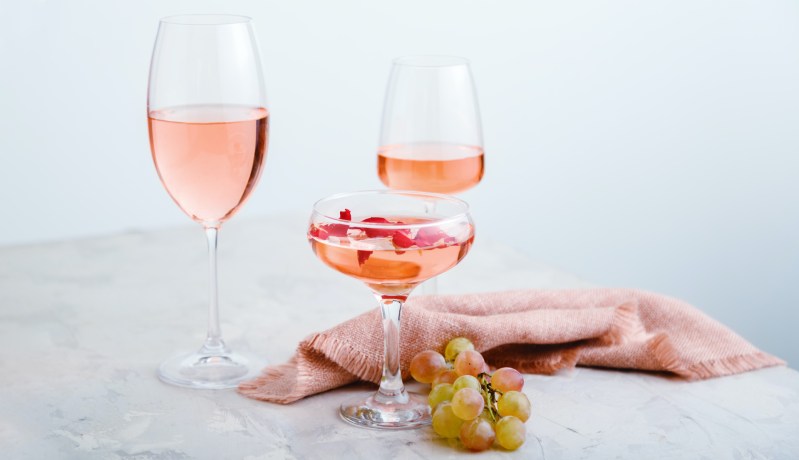
Rosé has been unparalleled in her rise to fame in recent years. What was once considered the red-headed stepchild of the wine world has now blossomed into something of a head cheerleader, mercifully rescued by the ever-changing tides of trendiness. This is one trend we’re insisting on sticking around for a while. Because rosé is so much more than we’ve given it credit for. Even now, as we praise her for her garden party prowess and pasta-pairing perfection, there’s so much more to love and appreciate.
This beautifully Barbie-hued wine is a problem for many, however. Is it white? Is it red? Did some winemaker get drunk and accidentally combine the two? In a way, yes. The flesh of all grapes, whether red or white, is transparent. The color of wine is only obtained through the red pigments of the grape skins. In red wine production, grape skins are fermented together with the juice for weeks. In white wine, the skins are removed altogether. When rosé is created, the skins of the grapes are fermented with the juice for just a few hours and then removed. This gives rosé its signature rosy pink hue. But besides its intriguing color and irresistible trendiness, there’s so much more to love about this beautiful wine.

What are the primary flavors of rosé?
Rosé wines are made from a blending of many grapes, with combinations of grenache, cinsault, mourvedre, pinot noir, syrah, and Sangiovese. Because there is so much room for experimentation, rosés can be vastly different in their characteristics and primary flavors.
For the most part, though, rosé’s notes commonly include red fruit, flowers, citrus, and honeydew, sometimes peppered with earthier, grassier notes like celery.

What is the taste profile of rosé?
The taste profile of rosé can be anywhere from completely dry to jammy and syrupy sweet, depending on many factors. As with all wines, climate has a tremendous amount to do with rosé’s flavor. Those grown in warmer climates tend to be lighter and more delicate, while cooler climate rosés are often more concentrated and intense in their flavor.
 Where does rosé grow?
Where does rosé grow?
The majority of the world’s rosé comes from Provence, France, which is widely known to be the epicenter of rosé production. Rosé from this region is known for being deliciously delicate, with a slight orange tint to its signature pink hue. Provence isn’t the only grower of rosé, however, with much of the best rosé wine coming from France, Italy, Spain, and California, to name a few.

How to serve rosé

Best food pairings for rosé
It’s only been in recent years that rosé has had a respected seat at the dining table, and we are ecstatic about the way it has elbowed its way in. A wine that was once seen only as a garden party prop has fought heartily for its place next to your plate, and it very much deserves to be there.
Lighter rosés are delicious when paired with lighter, fresh salads like niçoise, light soups, or cheese and charcuterie boards. More robust rosés, however, can stand up to even smoked or barbecue flavors, cutting through their rich flavors with their crispness.

Is rosé wine sweet or dry?
Rosé has a reputation for being a very sweet wine, which is only half deserved. While there are certainly sweet rosés, many rosés are actually quite dry. Generally speaking, older French rosé varieties are on the drier side, while newer rosé wines, like many Napa varieties, can be quite sweet.

Is rosé as strong as red wine?
Rosé is generally considered to be much lighter in flavor and body than most red wines. While red wines can certainly be fruity and light, rosé wines will almost always be lighter in body, flavor, and viscosity than red wines.
As far as rosé’s alcohol content, they have a considerably large range of about 11 – 14%, depending on the bottle, which puts them in the same range as most other table wines, red or white.

What’s the difference between Moscato and rosé?
Moscato is a sweet dessert wine made only from the uniquely characteristic Muscat grape. It differs from rosé in many ways, but the two are often compared as both wines can be considered sweet. Unlike Moscato, however, rosé can have a range of flavors and is created by blending several grape varieties.
Moscato can take on many flavors but is predominantly sweet and jammy, with syrupy notes of strawberries, orange blossom, and peach. Even in its sweetest form, rosé is far less sweet than Moscato and isn’t considered to be a dessert wine.
 Where does rosé grow?
Where does rosé grow?


